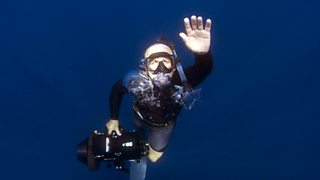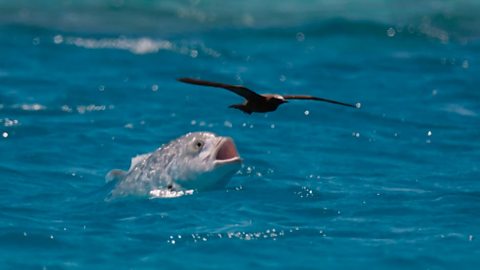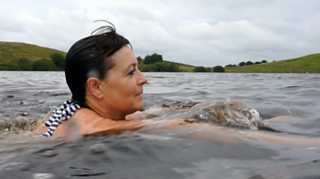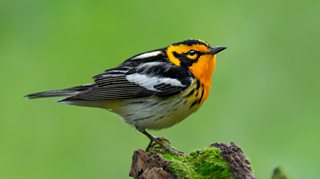Nine days at sea for one minute of TV — why wildlife cameraman Doug Allan’s work is worth the wait
15 November 2017
’s films of underwater life have captivated television audiences around the globe.

The Dunfermline-born cameraman’s work has included key scenes in landmark wildlife programmes such as , and .
And while we’ve been left awe-struck at the amazing scenes shown on , Doug has been explaining just how long it takes to make such an incredible series.
, “The rule of thumb is if you put someone like me out in the sea for nine days I will put a minute on the screen”.
“So when you look at one of these programmes you’re looking at about 450 days of filming to put 50 minutes on the screen.
“It’s a massive effort.”

Bird-eating fish takes to the air
Giant trevallies launch themselves out of the water to catch fledgling terns.
The Holy Grail of wildlife photography
But time spent underwater is well spent when it reveals previously unknown secrets about our world.
“The Holy Grail is to film something that no one has seen before”, says Doug.
“For example, that trevally sequence in programme one [of Blue Planet II], with the big fish leaping out of the water to catch birds in mid-air.”
But even with all his experience, there remains one animal that Doug has yet to successfully film and he’ll have to go back to the Arctic to find it.
“There’s a small whale up there called the narwhal,” he says. “And the great thing about it is that the male’s got a single ivory tusk growing out of [its] upper jaw.
“They’re extremely wary, but I am going to go up there and try again, and if I get it I will drown a happy man.”

Doug Allan's career highlight
Doug Allan has captured some of the most memorable wildlife images to have appeared on TV.
Doug Allan on Desert Island Discs
Blue Planet II
Latest features from ±«Óãtv Scotland
-
![]()
'Wild swimming helps me process the grief of losing my son'
The benefits of cold water therapy.
-
![]()
Winter adventures are appealing, but an expert advises caution
Trips in winter require particular knowledge and skills.
-
![]()
The rescuers: Why volunteers risk their lives in mountain emergencies
Landward meets members of the Cairngorm Mountain Rescue Team.
-
![]()
‘Look for the light’ – practical tips to help you through another winter with SAD
Useful advice and tips to combat low moods at this time of year.
-
![]()
How you could be a binge drinker without even knowing
Binge drinking is classed as fewer units than many people may realise.
-
![]()
How chocolate biscuits and drama classes helped one man leave prison behind
The healing power of creativity.
-
![]()
'When people believe in you, it’s life-changing'
Author Graeme Armstrong revisits the man who helped turn his life around.
-
![]()
The 'breath-taking' display of US birds swept on to British soil
Recent storms have brought rare birds to our shores.
-
![]()
Six things we learned about Alan Cumming on Take the Floor (Spoiler: includes accordions)
The actor spoke to Take the Floor's Gary Innes.
-
![]()
How street gangs trap young men in a dangerous cycle of violence
The almost inescapable pull of life in a gang.
-
![]()
Why stylist Gok Wan believes there's no such thing as bad fashion
The fashion expert says we should stop following rules and do what feels right.
-
![]()
Is sending a CV still the right way to apply for a job?
They've been central to job applications for years, but are they worth it?

















